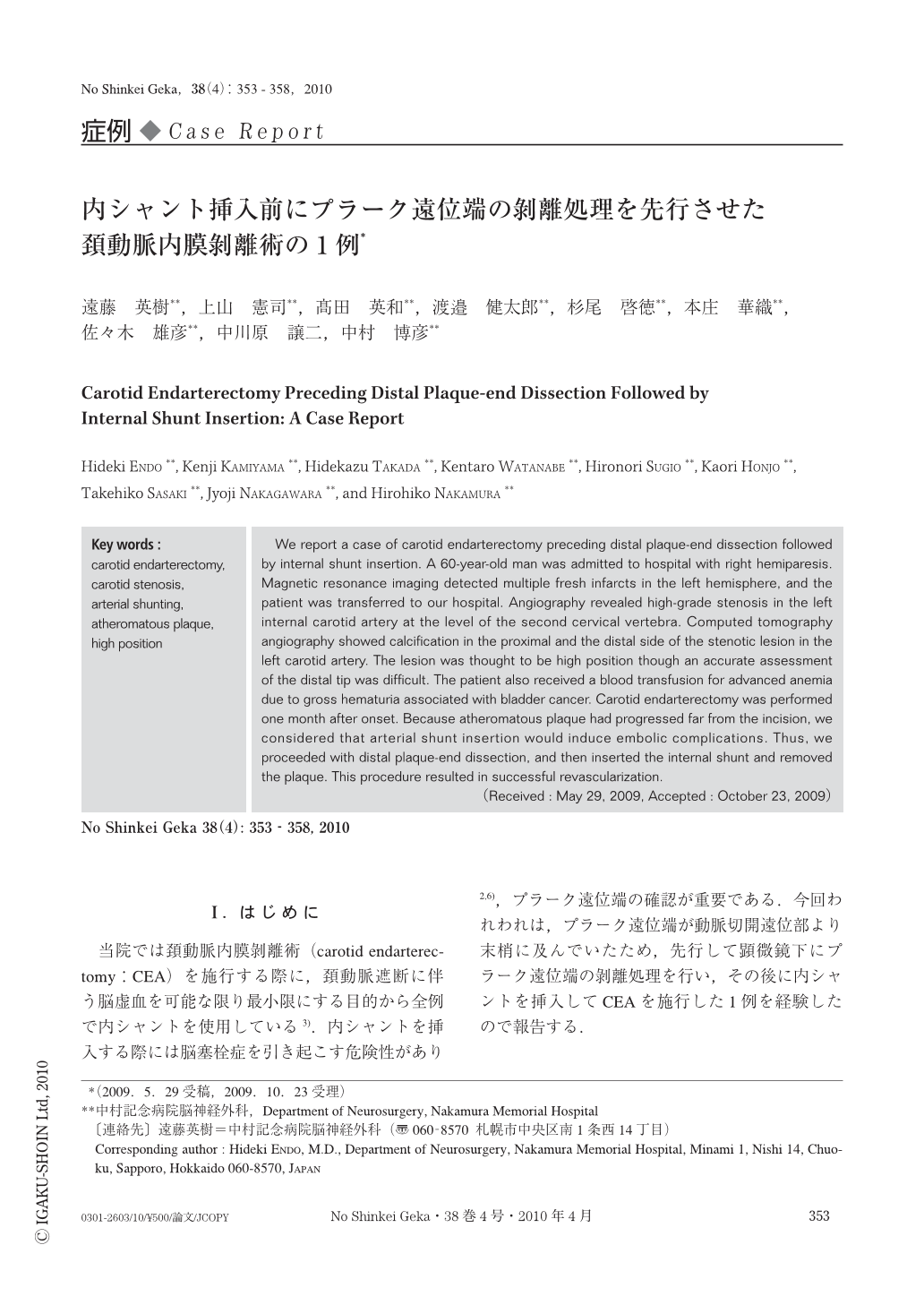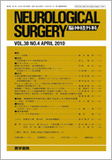Japanese
English
- 有料閲覧
- Abstract 文献概要
- 1ページ目 Look Inside
- 参考文献 Reference
Ⅰ.はじめに
当院では頚動脈内膜剝離術(carotid endarterectomy:CEA)を施行する際に,頚動脈遮断に伴う脳虚血を可能な限り最小限にする目的から全例で内シャントを使用している3).内シャントを挿入する際には脳塞栓症を引き起こす危険性があり2,6),プラーク遠位端の確認が重要である.今回われわれは,プラーク遠位端が動脈切開遠位部より末梢に及んでいたため,先行して顕微鏡下にプラーク遠位端の剝離処理を行い,その後に内シャントを挿入してCEAを施行した1例を経験したので報告する.
We report a case of carotid endarterectomy preceding distal plaque-end dissection followed by internal shunt insertion. A 60-year-old man was admitted to hospital with right hemiparesis. Magnetic resonance imaging detected multiple fresh infarcts in the left hemisphere,and the patient was transferred to our hospital. Angiography revealed high-grade stenosis in the left internal carotid artery at the level of the second cervical vertebra. Computed tomography angiography showed calcification in the proximal and the distal side of the stenotic lesion in the left carotid artery. The lesion was thought to be high position though an accurate assessment of the distal tip was difficult. The patient also received a blood transfusion for advanced anemia due to gross hematuria associated with bladder cancer. Carotid endarterectomy was performed one month after onset. Because atheromatous plaque had progressed far from the incision,we considered that arterial shunt insertion would induce embolic complications. Thus,we proceeded with distal plaque-end dissection,and then inserted the internal shunt and removed the plaque. This procedure resulted in successful revascularization.

Copyright © 2010, Igaku-Shoin Ltd. All rights reserved.


